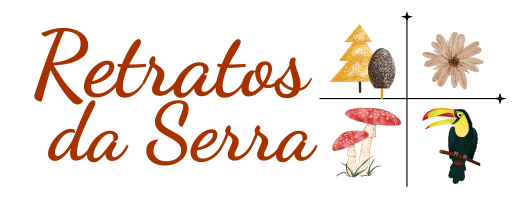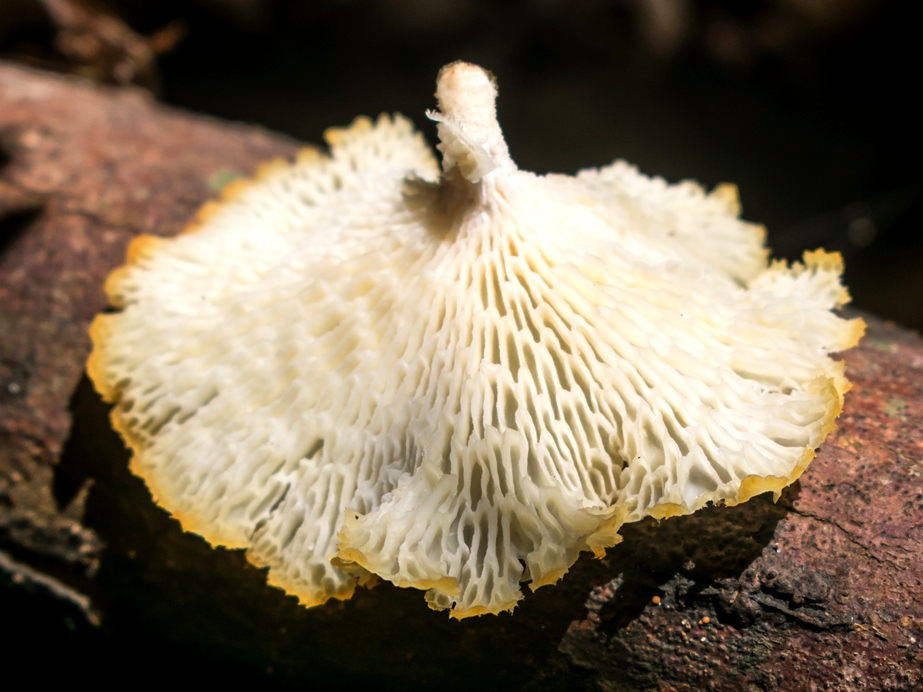Favolus brasiliensis, a wild edible mushroom that grows on decaying wood. The hymenophore (underside) has structures that look like honeycombs, a very beautiful and characteristic design.
It’s one of the species consumed by the Yanomami (Sanöma) indigenous people from the Amazon, and is known to them as Waikasö amo. Other mushrooms such as Pleurotus djamor and Lentinus crinitus, are other examples of species traditionally consumed by them.
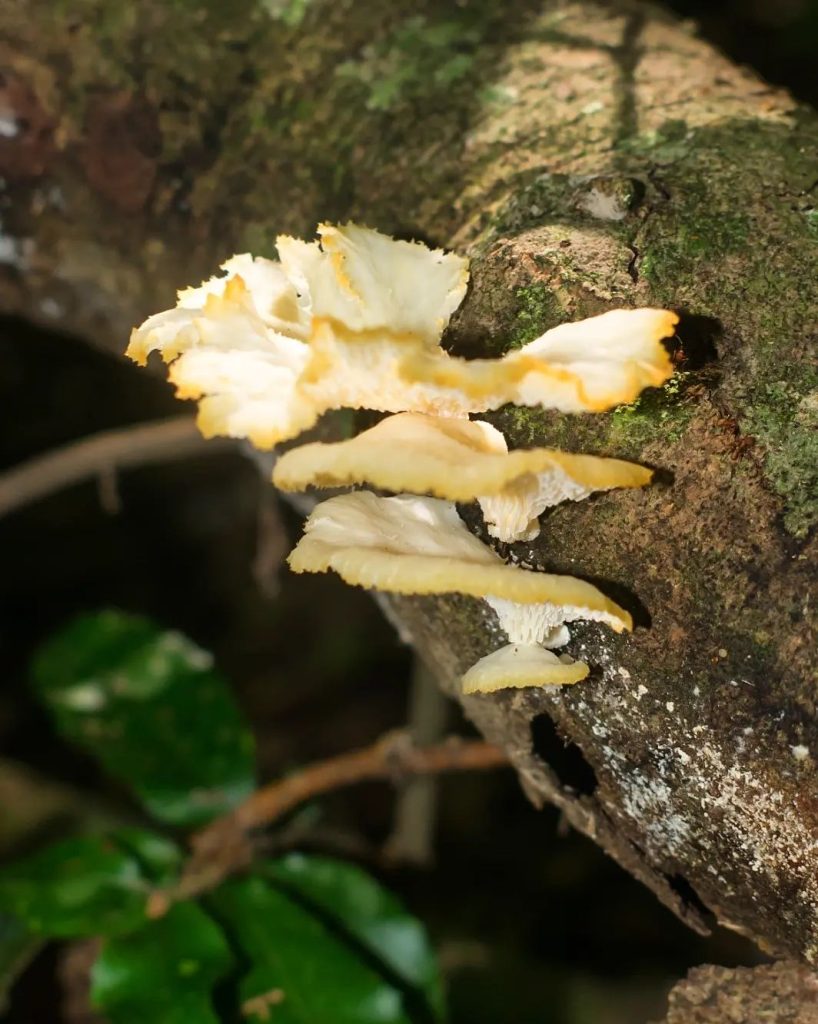
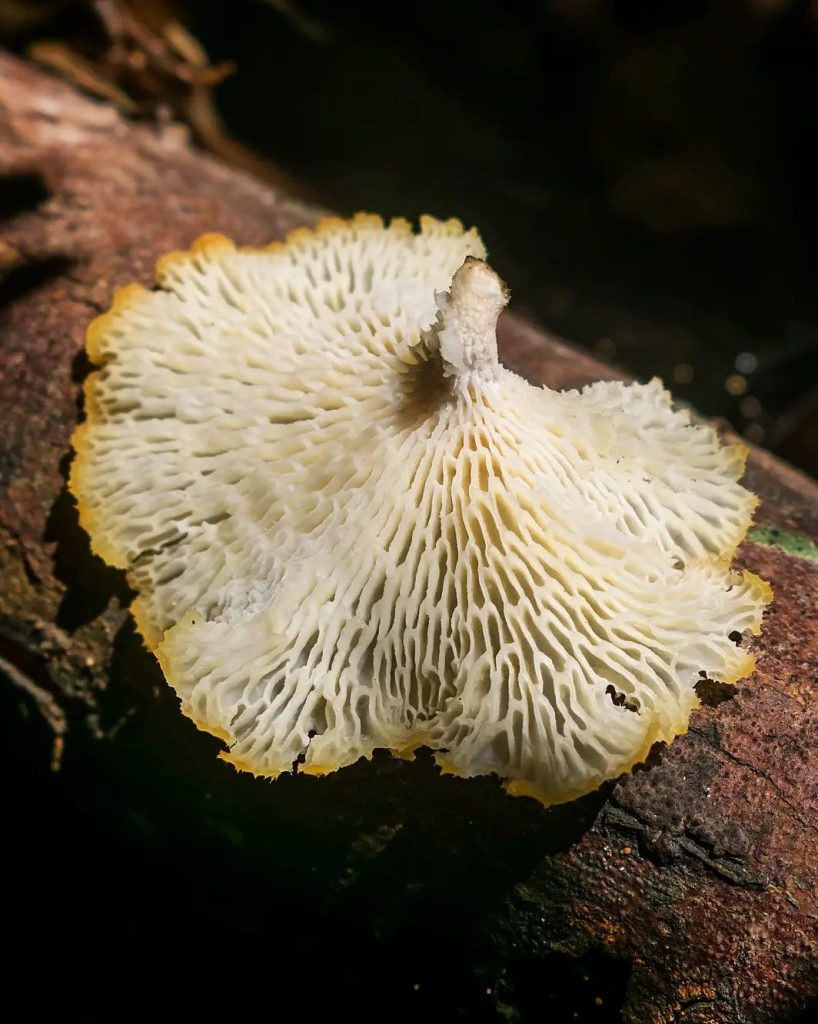
It was the first time we found this mushroom that had been on my wish list for a long time! It seems to be quite common in other parts of the country, but we don’t find it very easily here in the Serra Gaúcha region (mountain range in the South of Brazil).
I’ve seen in photos that they can grow quite abundantly, but unfortunately we only found a few. And they were already quite mature, a little dry, with yellow edges, since at the time it was very hot and dry for a few days.
Even so, we picked a few to try, it was so hard to find this species that I didn’t want to miss the opportunity!
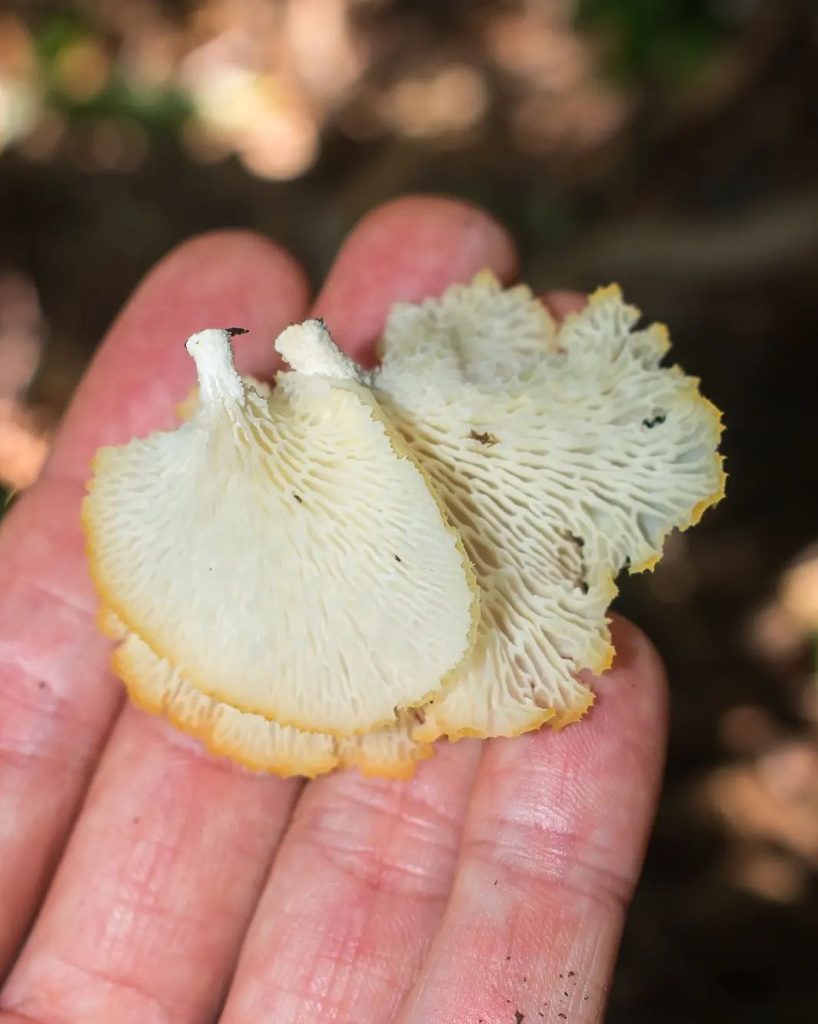
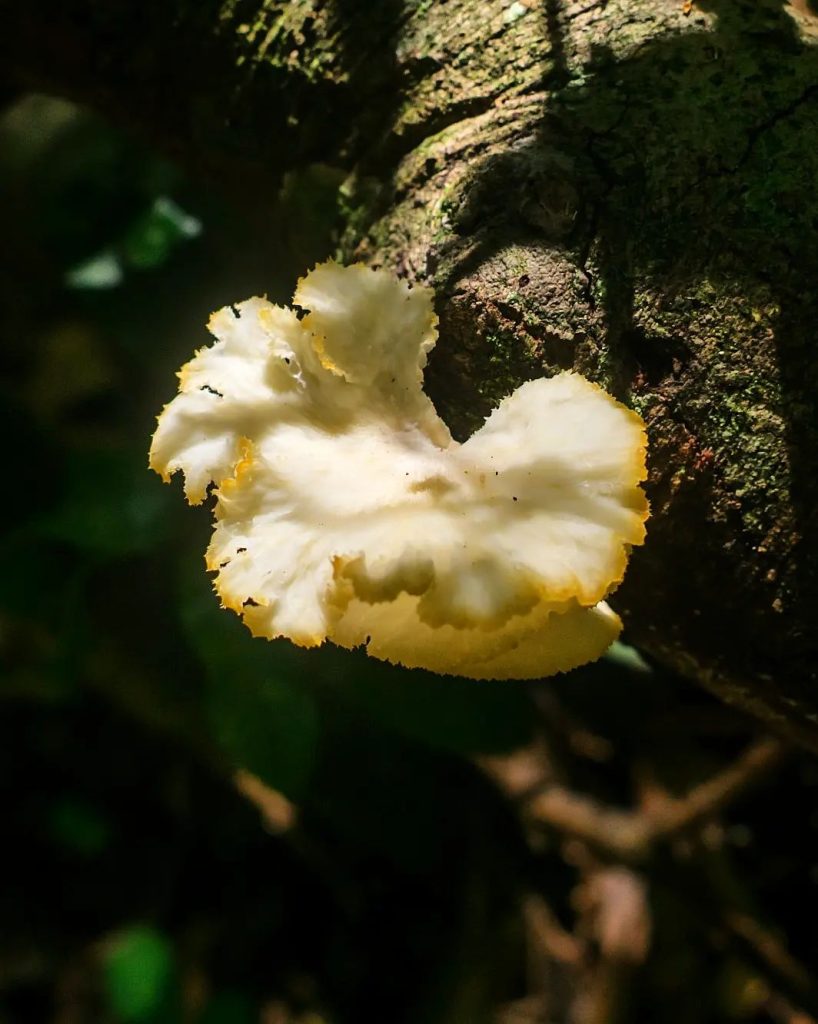
We sautéed them quickly, I don’t think it took even a minute, because they were small and already a bit dry. They became lightly “toasted” and like little mushroom chips, very crunchy and had a delicious flavor! I hope to find more one day to try them better.
⚠ Remember to never eat wild mushrooms without proper identification.
📸 Pictures made in São Francisco de Paula, Rio Grande do Sul (Serra Gaúcha, South of Brazil).
